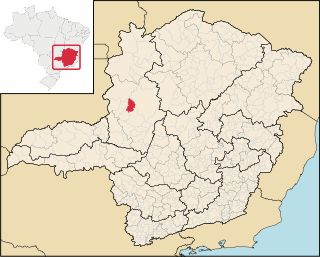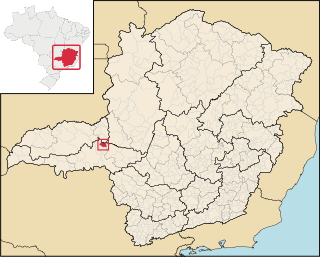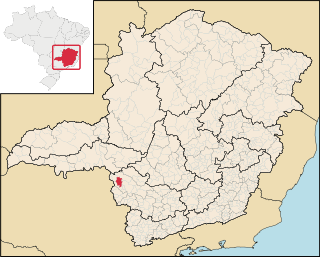Belo Horizonte, Brazil's sixth largest city, and the capital of Minas Gerais state, has a vibrant, diversified economy. It receives a large number of visitors and exerts a pivotal influence in the country's economy. Both multinational and Brazilian companies, such as Google, Oi, and Fiat maintain offices or headquarters in the city. The service sector plays a very important role in the economy of Belo Horizonte, being responsible for 85% of the city's gross domestic product (GDP), with industry making up for most of the remaining 15%. Belo Horizonte has a developed industrial sector, being traditionally a hub of the Brazilian siderurgical and metallurgical industries, as the state of Minas Gerais has traditionally been rich in minerals.
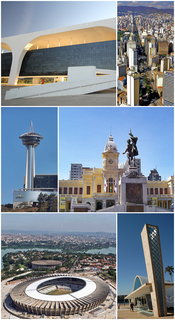
Belo Horizonte is the sixth-largest city in Brazil, with a population of approximately 2.5 million. It is the thirteenth-largest city in South America and the eighteenth-largest in the Americas. The metropolis is anchor to the Belo Horizonte metropolitan area, ranked as the third most populous metropolitan area in Brazil and the seventeenth most populous in the Americas. Belo Horizonte is the capital of the state of Minas Gerais, Brazil's second most populous state. It is the first planned modern city in Brazil.

Minas Gerais is a state in Southeastern Brazil. It ranks as the second most populous, the third by gross domestic product (GDP), and the fourth largest by area in the country. The state's capital and largest city, Belo Horizonte, is a major urban and finance center in Latin America, and the sixth largest municipality in Brazil, after the cities of São Paulo, Rio de Janeiro, Salvador, Brasilia and Fortaleza, but its metropolitan area is the third largest in Brazil with just over 5,800,000 inhabitants, after those of São Paulo and Rio de Janeiro. Nine Brazilian presidents were born in Minas Gerais, the most of any state.
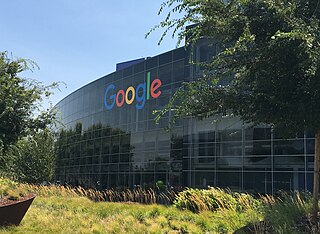
Google LLC is an American multinational technology company that specializes in Internet-related services and products, which include online advertising technologies, search engine, cloud computing, software, and hardware. It is considered one of the Big Four technology companies, alongside Amazon, Apple, and Facebook.
Belo Horizonte is the distribution and processing center of a rich agricultural and mining region and the nucleus of a burgeoning industrial complex. Production is centred on steel, steel products, automobiles, and textiles. Gold, manganese, and gem stones mined in the surrounding region are processed in the city. [1] The main industrial district of the city was set during the 1940s in Contagem, a part of greater Belo Horizonte. Multinational companies like FIAT (which opened its plant in Betim in 1974), Arcelor, and Toshiba have subsidiaries in the region, along with other textile, cosmetic, food, chemicals, pharmaceuticals, furnishing and refractory companies. Between the companies headquartered in the city we can list siderurgicals Açominas (held by Gerdau, one of the largest multinationals originated in Brazil); Usiminas; Belgo-Mineira (held by Arcelor); Acesita (partially held by Arcelor); mobile communication Vivo; and Telecom Italia Mobile, as well as the NYSE-listed electrical company CEMIG. Leading steel product makers Sumitomo Metals of Japan and Vallourec of France have also plans to construct an integrated steel works on the outskirts of the city.

Agriculture is the science and art of cultivating plants and livestock. Agriculture was the key development in the rise of sedentary human civilization, whereby farming of domesticated species created food surpluses that enabled people to live in cities. The history of agriculture began thousands of years ago. After gathering wild grains beginning at least 105,000 years ago, nascent farmers began to plant them around 11,500 years ago. Pigs, sheep and cattle were domesticated over 10,000 years ago. Plants were independently cultivated in at least 11 regions of the world. Industrial agriculture based on large-scale monoculture in the twentieth century came to dominate agricultural output, though about 2 billion people still depended on subsistence agriculture into the twenty-first.

Mining is the extraction of valuable minerals or other geological materials from the Earth, usually from an ore body, lode, vein, seam, reef or placer deposit. These deposits form a mineralized package that is of economic interest to the miner.

An industry is a sector that produces goods or related services within an economy. The major source of revenue of a group or company is an indicator of what industry it should be classified in. When a large corporate group has multiple sources of revenue generation, it is considered to be working in different industries. The manufacturing industry became a key sector of production and labour in European and North American countries during the Industrial Revolution, upsetting previous mercantile and feudal economies. This came through many successive rapid advances in technology, such as the development of steam power and the production of steel and coal.
There are also a large number of small enterprises in the technological sector with regional to nationwide success, particularly in the fields of computing and biotechonology. Because of both governmental and private funding in the diversification of its economy, the city has become an international reference in Information Technology and Biotechnology, and is also cited because of the advanced corporate and university research in Biodiesel fuel. The number of jobs in the Information sector has been growing at annual rates above 50%. The Belo Horizonte Metropolitan Area, composed of 33 cities under the capital's direct influence, is home to 16% of the country's biotechnology companies, with annual sales of over R$550 million. [2]

Computing is any activity that uses computers to manage, process, and communicate information. It includes development of both hardware and software. Computing is a critical, integral component of modern industrial technology. Major computing disciplines include computer engineering, software engineering, computer science, information systems, and information technology.

Biotechnology is the broad area of biology involving living systems and organisms to develop or make products, or "any technological application that uses biological systems, living organisms, or derivatives thereof, to make or modify products or processes for specific use". Depending on the tools and applications, it often overlaps with the (related) fields of molecular biology, bio-engineering, biomedical engineering, biomanufacturing, molecular engineering, etc.

Biodiesel refers to a vegetable oil- or animal fat-based diesel fuel consisting of long-chain alkyl esters. Biodiesel is typically made by chemically reacting lipids with an alcohol producing fatty acid esters.
Projects in these fields are likely to expand because of integration between universities, the oil company Petrobras and the Brazilian Government. One of the largest events that ever took place in the city, the Inter-American Development Bank meeting, occurred in 2005 and attracted people from everywhere in the world.
Petróleo Brasileiro S.A. — Petrobras, more commonly known as simply Petrobras, is a semi-public Brazilian multinational corporation in the petroleum industry headquartered in Rio de Janeiro, Brazil. The company's name translates to Brazilian Petroleum Corporation — Petrobras.

The Inter-American Development Bank is the largest source of development financing for Latin America and the Caribbean. Established in 1959, the IDB supports Latin American and Caribbean economic development, social development and regional integration by lending to governments and government agencies, including State corporations.
For a long time it was marked by the predominance of its industrial sector, but from the 1990s there has been a constant expansion of the service sector economy, particularly in computer science, biotechnology, business tourism, fashion and the making of jewelry. The city is considered to be a strategic leader in the Brazilian economy. The move towards business tourism transformed the capital into a national hub for this segment of the tourist industry.

Computer science is the study of processes that interact with data and that can be represented as data in the form of programs. It enables the use of algorithms to manipulate, store, and communicate digital information. A computer scientist studies the theory of computation and the practice of designing software systems.
Business tourism or business travel is a more limited and focused subset of regular tourism. During business tourism (traveling), individuals are still working and being paid, but are doing so away from both their workplace and home.

Fashion is a popular aesthetic expression in a certain time and context, especially in clothing, footwear, lifestyle, accessories, makeup, hairstyle and body proportions. Whereas, a trend often connotes a very specific aesthetic expression, and often lasting shorter than a season, fashion is a distinctive and industry-supported expression traditionally tied to the fashion season and collections. Style is an expression that lasts over many seasons, and is often connected to cultural movements and social markers, symbols, class and culture. According to sociologist Pierre Bourdieu, fashion connotes “the latest fashion, the latest difference.”
- In 2008, the city's GDP was R$42 billion (or about of US$26,2 billion). [3]
- In 2008, the Greater Belo Horizonte's GDP was R$98,5 billion (or about of US$61 billion). [4]
- In 2008, the city's per capita income was R$17,313 (or US$10,820). [5] In 2007, it was R$15,830 [6] (about of US$9,893). [6]
The Brazilian real is the official currency of Brazil. It is subdivided into 100 centavos. The Central Bank of Brazil is the central bank and the issuing authority. The real replaced the Brazilian cruzeiro.

A metropolitan area is a region consisting of a densely populated urban core and its less-populated surrounding territories, sharing industry, infrastructure, and housing. A metro area usually comprises multiple jurisdictions and municipalities: neighborhoods, townships, boroughs, cities, towns, exurbs, suburbs, counties, districts, states, and even nations like the eurodistricts. As social, economic and political institutions have changed, metropolitan areas have become key economic and political regions.

Per capita income (PCI) or average income measures the average income earned per person in a given area in a specified year. It is calculated by dividing the area's total income by its total population.
The network in Belo Horizonte accounted for 7.2% of GDP in 2002 and came to 7.6% in 2006. The GDP per capita of the network was R $6,624 in 2002 and changed to R $10,638 in 2006, below the national level. The GDP per capita in the city of Belo Horizonte, who heads the network, it remained higher than the network, but with lower growth in the period, R $9,077 in 2002 and R $13,636 in 2006. In the network of Belo Horizonte, the participation of the municipality in total GDP declined from 19.6% in 2002 to 18.2% in 2006. [7]



